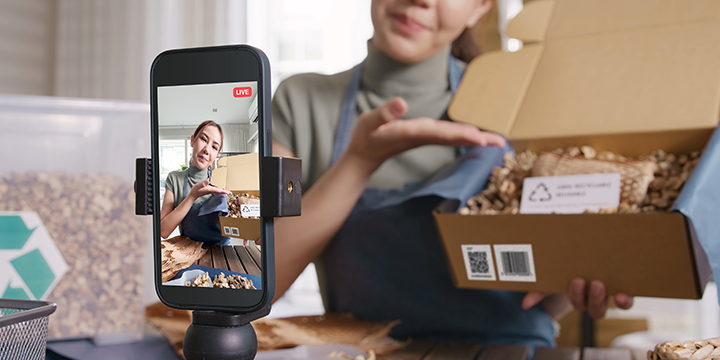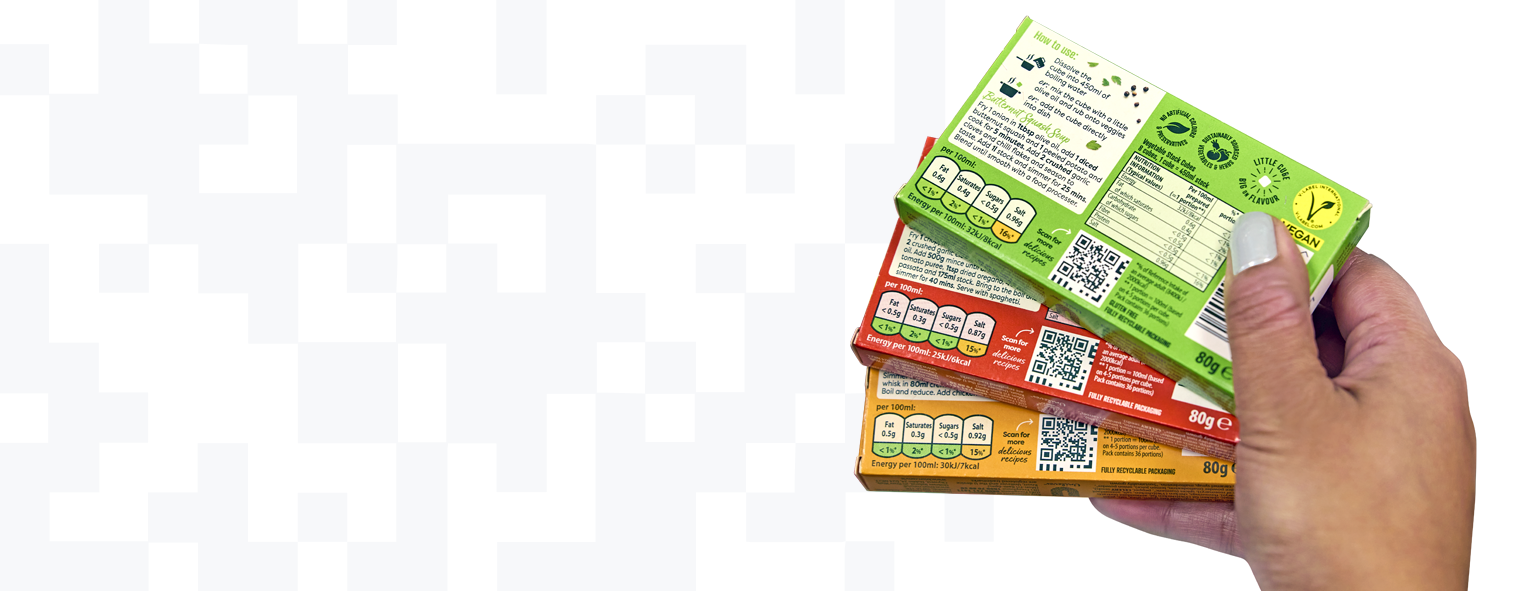June 11, 2025 Industry news
"What you cannot see, you cannot manage." That is the starting point for Scaling QR Codes with Embedded Date Codes – a new report from ECR Retail Loss that casts fresh light on a longstanding challenge in grocery: the limited visibility of expiration dates on perishable products.
With manual checks still common and food waste a persistent cost, the sector is being urged to accelerate the adoption of a more intelligent solution. QR codes powered by GS1, when embedded with expiry information, offer a promising way forward.
ECR's report identifies the essential conditions for their successful rollout by 2030. Developed in collaboration with over 60 food waste experts and 25 retailers, the findings offer both strategic guidance and a practical framework for action. Read on for a summary of some of the key themes and recommendations put forward.
From static labels to dynamic data
The traditional barcode has served retail well for over 50 years, but it cannot carry the data needed to manage expiration dates effectively. As the report explains, "the adoption of 2D/QR codes that carry expiry dates and other product information represents a transformational opportunity. This technology has been described as a 'game changer', offering several potential use cases."
QR codes powered by GS1 can embed far more information, including batch numbers and expiration dates, within a single, scannable symbol. This opens new possibilities for retailers to automate expiry tracking, reduce waste, optimise replenishment and avoid the sale of expired goods. Expiry-aware scanning at checkout also has the potential to significantly strengthen consumer trust, safety and regulatory compliance.

Regulatory change is on the horizon
Much like in pharmaceuticals, where product traceability has been driven by legislation, food retail may be next. With the European Union aiming to halve per capita food waste by 2030, regulation is likely to play a key role.
As the report states: "Once 2D/QR code technology becomes an enabler for regulatory compliance, the conversation within businesses will shift. It will no longer be a question of whether to adopt, but when—or by what deadline—in order to remain compliant." QR codes powered by GS1 are well suited to support this shift. Their consistent, machine-readable format provides a strong basis for traceability and reporting.
Standards must come first
Without alignment on how QR codes are implemented, adoption could stall. Competing formats and unclear data requirements would only introduce unnecessary complexity. GS1 standards provide the shared structure needed to make expiration-aware QR codes work universally, across supply chains, retailers and systems.
The report stresses that “nothing will slow down the pace of adoption and scaling of 2D/QR codes more than the existence of competing—and potentially incompatible—standards.” With a common approach to encoding, placement and scanning, industry can build confidence and move faster.
Food waste must be a board level priority
The benefits of QR codes with embedded expiry data, including fewer markdowns, more efficient replenishment and better compliance, are only realised when waste reduction is treated as a core business objective.
"Put simply, the successful adoption and scaling of 2D/QR codes relies heavily on food waste reduction being treated as a top organisational priority." Retailers that prioritise food waste strategically are more likely to secure the investment, leadership and focus needed to scale this technology.

Strong leadership required
The report calls for one named individual to take accountability.
A “Directly Responsible Individual” provides clear ownership and keeps up momentum. This person should coordinate cross-functional teams, manage timelines and champion the case for change, both internally and externally.
As the report puts it, “appointing a single individual with clear responsibility and accountability ensures the initiative has a focal point for leadership, planning, coordination and communication.”
Technology readiness across the business
Once strategic priorities are clear and ownership is assigned, the next step is assessing technology. Scanners, mobile devices and enterprise platforms must all be able to process QR codes accurately and consistently.
"The ability to maintain transaction speed and accuracy is essential to prevent any negative impact on the customer experience," the report acknowledges. A seamless customer journey is vital to secure adoption across stores.
Engaging teams across the organisation
Change at this scale depends on people. From store colleagues and cashiers to supply chain and IT teams, many functions will play a role in implementation. Training, clear communication and two-way feedback will help establish new processes and routines.
"The successful scaling of 2D/QR codes will rely heavily on the active engagement and commitment of people across the entire organisation", so employees need to understand how this will affect them and why it matters.
Suppliers need time and support
Embedding expiry data into QR codes will require suppliers to adjust their labelling processes. GS1's guidance and services are helping to build readiness, but every retailer has a role in making adoption manageable, particularly for smaller suppliers.
"Early engagement with willing suppliers—those ready to act as first movers—will be critical to building momentum," the report argues. Phased approaches, consistent standards and clear communication will help suppliers make the transition smoothly.

Building consumer confidence
For shoppers, these QR codes offer more than just expiration visibility. When linked to apps or mobile scanning journeys, they can provide product details, nutritional data and sourcing information.
"Consumers must perceive them as familiar, trustworthy and easy to use. Building public confidence and acceptance is essential," the report advises. During the early transition, clear in-store messaging and staff guidance will help avoid confusion and reinforce trust.
No stakeholder left behind
A successful rollout must work for everyone. Consumers without smartphones, suppliers with limited capabilities and stores using older systems all need practical solutions. Backup options, fallback scanning methods and inclusive access to information will be essential.
"If the technology is not fully inclusive—or is perceived to disadvantage any group—the pace of adoption could be seriously hindered.” The industry must plan for these challenges early, learning from past experiences.
A framework for action
“Scaling QR Codes with Embedded Date Codes” provides a credible and collaborative roadmap for adoption. With QR codes powered by GS1, the industry has a proven solution ready to scale. As the report clearly lays out, the conditions for success are now defined and are becoming increasingly urgent.
Growing numbers of retailers now have the insight, tools and partnerships they need to move forward. With focused effort, QR codes powered by GS1 can reduce waste, increase efficiency and build trust, helping the sector meet the challenges of the decade ahead.
"By working together, we are much more likely to sell more and lose less." Now is the time to act.




